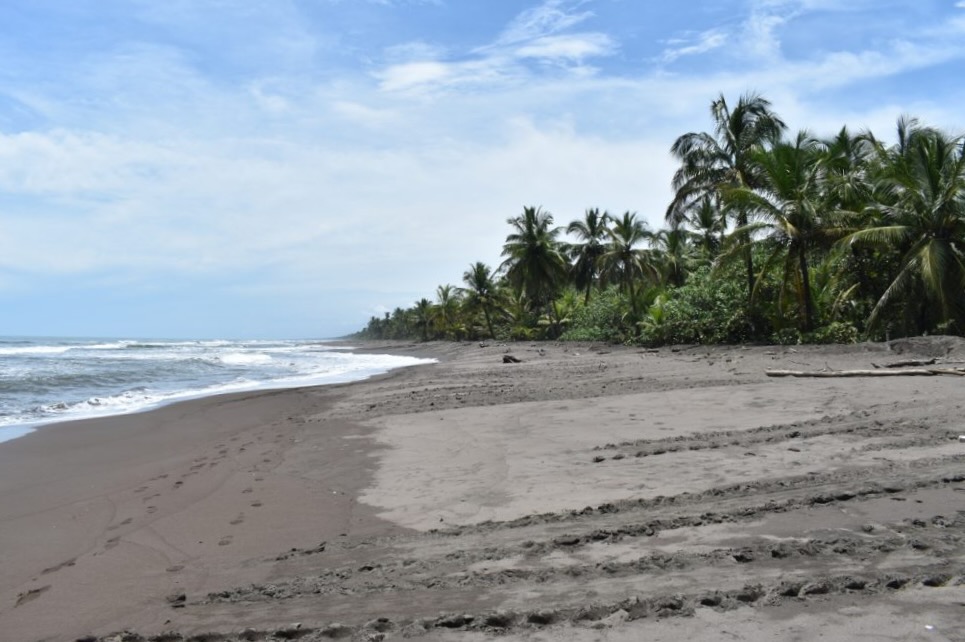Hi there,
Here is the first part of this post:
The prices were between $30 and $35 per person to do the tour that consists of entering the beach at night with a guide to see the turtles. There was a man who charged us $25 but we didn’t think he was good. There was another guide that we liked at first, but when we tried to haggle, he told us that “he was not going to prostitute himself”.
After a lot of walking, a man named Roberto told us that he charged us $20 and explained very well what we were going to do, so we booked with him.
To see the turtles, it is mandatory to do it with a guide because after 18h, they close public access to the beach since the turtles are constantly entering and leaving the sea. You must wear dark clothes, you cannot take any device to record or take photos (that’s why there are no photos of turtles in this post) because they would take you off the beach and you and the whole group would lose the money; In addition, you must speak little and very low.
Each group can spend a maximum of 2 hours on the beach, but if you see the four processes (arrival, spawning, closing of the nest, going to sea) before this time, you must still leave the beach. We stayed an hour.
There are two shifts (20h or 22h) and different areas to see the turtles; Everything works because of a raffle they do at 17h. After that time, you go to your agency, and they inform you about the time and the area that you were assigned to. In high season, it is likely that you will have to go far away into the national park, and you will have to pay the boat, which is an additional $5. In September it is low season, there are few tourists and many turtles, so almost all the groups go to the public beach that is right next to the town.
Our turn was at 22h and they put us in a group where everyone was Spanish except me. The guide was a super nice woman that we had met the night before.
Esmeralda told us that we must dress in dark colors because that way the turtles see us as part of the beach since they don’t have very good vision outside the sea. If you dress in white you can confuse the turtles since they only see the sea white, due to the reflection of the moon on the sea at night.
You cannot be close when the turtle reaches the beach because if she sees you, she will interrupt the process and go back to the sea. You must wait for her to reach the beach, make a hole in the sand, and start laying her eggs because at that moment she goes into a trance and doesn’t realize what’s around her, she doesn’t even notice if they touch her. Tourists obviously cannot touch them, but there are biologists on the beach all night who oversee examining, cleaning, and caring for them.
In Tortuguero 6 types of turtles spawn throughout the year and in September we saw the green turtle. When you go to the beach you have to adapt your eyes because it is totally dark, and you can’t take flashlights (for what I explained about white). There are lots of turtles in different processes and the biologists tell the guide where we can go.
We saw the turtle spawning less than half a meter away; It’s amazing because it’s a giant thing and she can drop up to 80 eggs. Then she starts to cover the nest and it takes about 40 minutes in this process to try to camouflage it as best as possible. Then she makes her way back to the sea.
We were lucky enough to see all four processes and many turtles coming and going in less than an hour. It is a beautiful experience that makes you understand even more how wonderful nature is.
In September, the little turtles are beginning to leave the nests to go to the sea. At first, they are the size of an almond and wait to make their way to the water together. They come out in the morning when the temperature is lowest because otherwise, they would not survive.
The sad part is that, out of every thousand turtles, only 1 or 2 manage to survive to adulthood to return to the same beach to lay their eggs.
Although all the turtles are in danger of extinction and Tortuguero is a protected area, the beach is not closed, and tourists are not prevented from walking on the turtle nests. Why? If humans step on the nests, they help to mislead predators and thus protect the eggs. In addition, the more you step on, the more the sand compacts and thus increases the temperature of the nest, which contributes to the emergence of more females.
More articles about my trip to Costa Rica:

